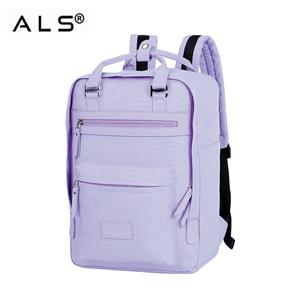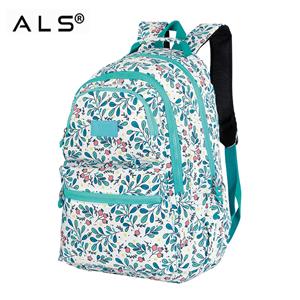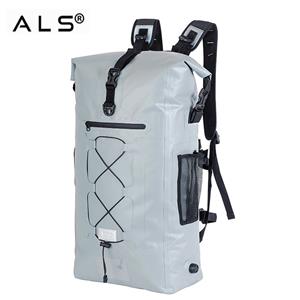How to Choose a Well-Designed Backpack, According to Designers
Looking for a backpack but finding it hard to narrow down a good pick? So what exactly should you be looking for to help make the decision process easier? Well, who better than to ask than the expert designers dreaming up the best backpacks in the world. So we reached out to some of our favorite carry designers to share their top tips on how to choose a well-designed backpack...
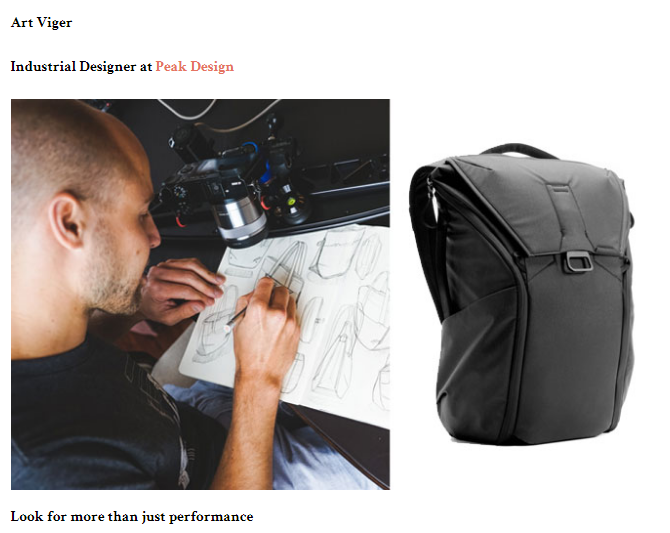
As much as we might not like to admit it, a backpack is oftentimes just as much about fashion as it is about function. And this is coming from a designer who actively hates on fashion-forward products while spending absurd amounts of time stressing about tiny details related mostly to nuts and bolts usability, durability, manufacturability, value and performance. But a well-designed bag that doesn't communicate anything about who made it or who's wearing it…is like driving a Kia. Man, those new Kias are pretty sweet. And that warranty!? But am I buying a Kia? Shit no.
You get the point. There are so many great bags out there these days. Support designers who are passionate about the products they build and the communities they build them for. Invest in bag designs that speak to you and say something about your personality, interests and aspirations. That's where the fashion (cringe) element comes into play. Of course you should never buy a bag with fashion as the primary driver, but don't ignore it entirely. If you can't emotionally connect with a bag then you probably won't use it for long no matter how well it works. And yes, even the most hardcore tactical bag usually has this fashion element wrapped into the purchase decision. Probably more so, let's be honest.

I think it's always best to ask why you've stopped using the existing products you own? Do they break? Do they get dirty? Did that citrus lemon zing colorway end up being a passing fad? Or do they just stop rocking your emotional boat? The more you understand your own reasons for aborting products, the more you'll be able to steer yourself towards products that become long-lasting companions for the road ahead.
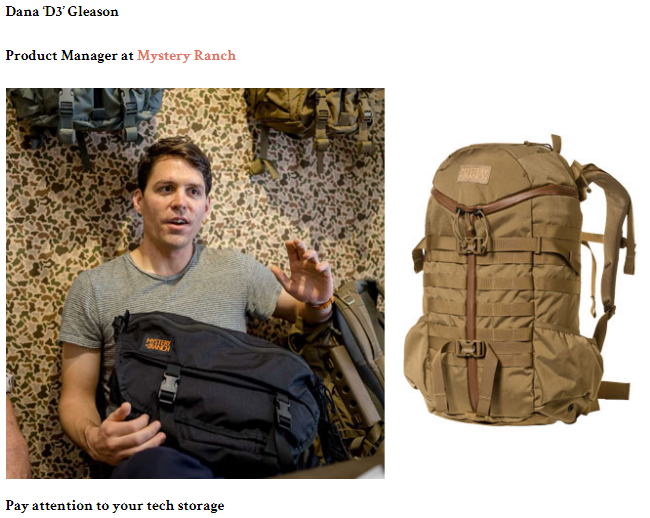
The main thing I tell people when they are looking at a pack to carry a computer in is to pay attention to the shape and how the computer will fit in any bag they are looking at buying. The shape of a person's back is curved like an 'S' and a computer is straight. If the bag you get to carry a laptop doesn't accommodate for these two facts, you will have an uncomfortable pack that puts strain on your laptop.
Most bags keep the computer up high and that will keep the bag from properly curving over the shoulder blades. Your shoulder blades will also act as the fulcrum that your computer will bend over. Even if it's titanium something has to give and what will often happen is the keyboard will just get shoved into the screen. Mystery Ranch fixes this by having a floating computer sleeve that lets a computer push into the bag on the bottom and top as it needs to flex around your back, but there are many ways to work around this issue that clever designers have figured out.
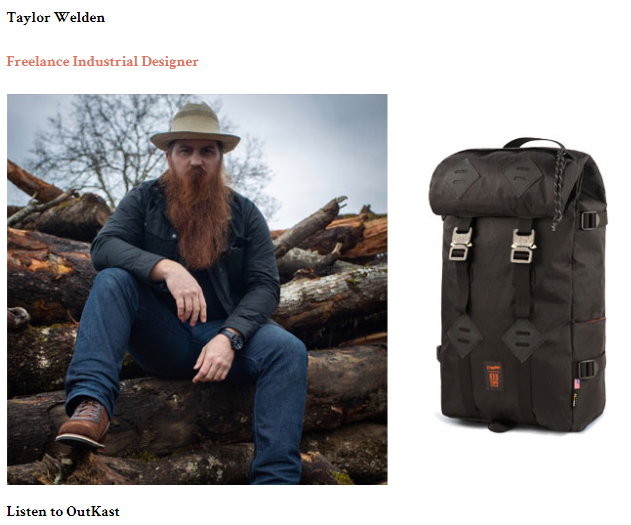
My single best piece of advice for choosing a well-designed backpack, borrowing from my dozen-plus years as an Industrial Designer focusing on softgoods design of bags, packs, and travel gear for some major brands in the industry… My best advice…
Yes, listen to OutKast.“I'mma show you how to wild out like Jack Tripper. Let me be bambino on your snipples. YKK on yo'zipper, lick you like a lizard when I'm slizzerd”. That quick 4-word verse snuck in there from Mr. Big Boi can make all the difference between choosing a great bag and one that falls apart on you at the worst time possible. For example, when you're 8 days into a 15-day adventure and the contents of your pack completely spill out over the floor of the Narita airport as you're sprinting to make your flight to Manila which leaves in 10 minutes, leaving you no way to refill and close your bag, as the zipper completely self-destructed. Pretty horrific, eh? Well, that's probably because that zipper was some no-name generic garbage nonsense.
There ARE many other high-quality and trustworthy zipper manufacturers out there (TiZip, RIRI, Talon, just to name a few). And I personally have and still confidently use all of these zipper brands on bags and packs I've designed… frequently even. But for a quick and easy way to choose a great bag… look for that industry standard, the YKK zipper. Or at least look for a zipper that is branded with a quality zipper manufacturer's name on it. If the maker of the bag doesn't call out the name of the zipper on their website or on the product hangtag, it's because they're embarrassed and don't want you, the customer, to know. So remember… listen to OutKast. And look for that YKK on yo' zipper.
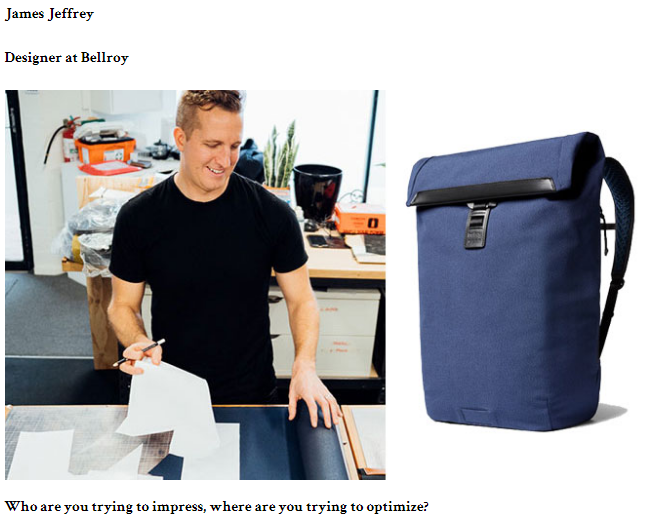
Bags, like clothes, signal. These signals show a great deal about how you travel through the world and your personal values. Walking into a meeting in a tailored suit carrying a ballistic nylon freebie bag with 'Microsoft Windows 2007 Developer Conference'embroidered onto the failing flap. Well, you sir have just devalued your suit.
I feel like shoes have a cultural acceptance of taking time to pair with your life that far eclipses bags (well for dudes, mainly). Where are you going to be going? Does the minimal functionality of Mismo's organization matter over its ability to effortlessly walk into a high-powered meeting and immediately put you on the front foot? Most likely not.
So some bags might never be perfect, but they can certainly nail one purpose – every single time.
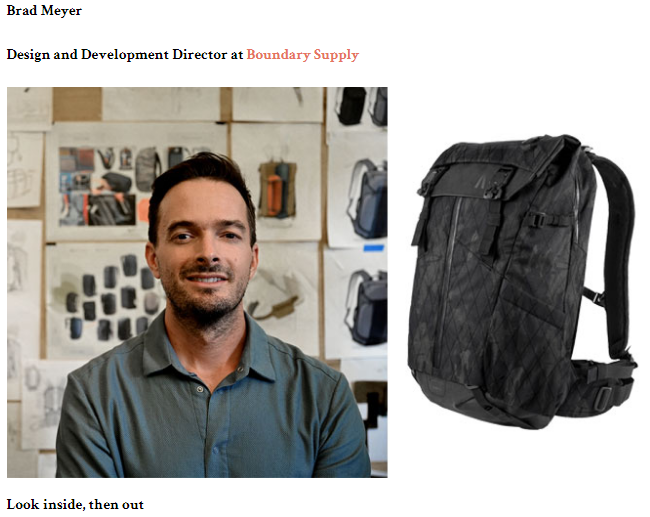
When looking into the design of an everyday bag, my interest is always first focused on the internal architecture.
Having clean separation for commuting, work, and play is key and something you don't want mixed up throughout the day. For example, commuters want basic weather protection and easy accessibility for the random conditions you encounter, so TPU-coated materials and WR zippers on face-forward pocketing and quick-access pockets for your phone and keys are essential. When entering your work space you need to have easy access to a well-padded laptop sleeve along with essential pockets for all the work tools that can be quickly laid out in your space.
Lastly, after your work is done you might need a change of clothes for jumping on your bike or heading to the gym. To keep everything clean there must be a well-separated volume with stretch pockets and wet/dry separation for messy items. All together these purposeful compartments (and weather protection/commuter functionality) make for a well-designed pack that makes all aspects of your life less stressful.
Then, I move to the external aesthetic, which needs to be minimal.

Regardless of whether I am designing a lifestyle daypack or an alpine climbing pack, I want it to have a long, useful life. This is the most sustainable type of product to put out into the world and one of the hallmarks of a well-designed backpack. A well-designed, enduring product will consider many aspects of materials, design and construction and each brand will emphasize different areas. So what can you do when comparing backpacks at the front-end that will indicate it is well designed?
Seek out good quality. You can look at the individual ingredients of a backpack as signs (eg: branded components or material specs) but often a pack is more than the sum of its parts. My top pick would be to buy a backpack with a warranty the brand promotes. Ideally a lifetime warranty or at minimum 3 years. This way you know the brand is invested in quality materials, construction, and your end-user experience.
Try before you buy. As much as designers obsess over ergonomics and fit, the product brief rarely includes fitting 100% of the population. It is good practice to try the pack out with some weight or your current carry contents. Is it a comfortable fit for you? Can it be adjusted? If the pack is not comfortable to wear or does not carry and organize your load well, then reassess. After all, you are probably looking for a backpack because it can carry and distribute the load better than other types of bags.


